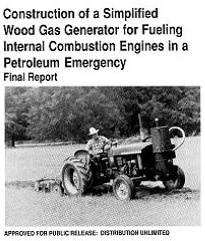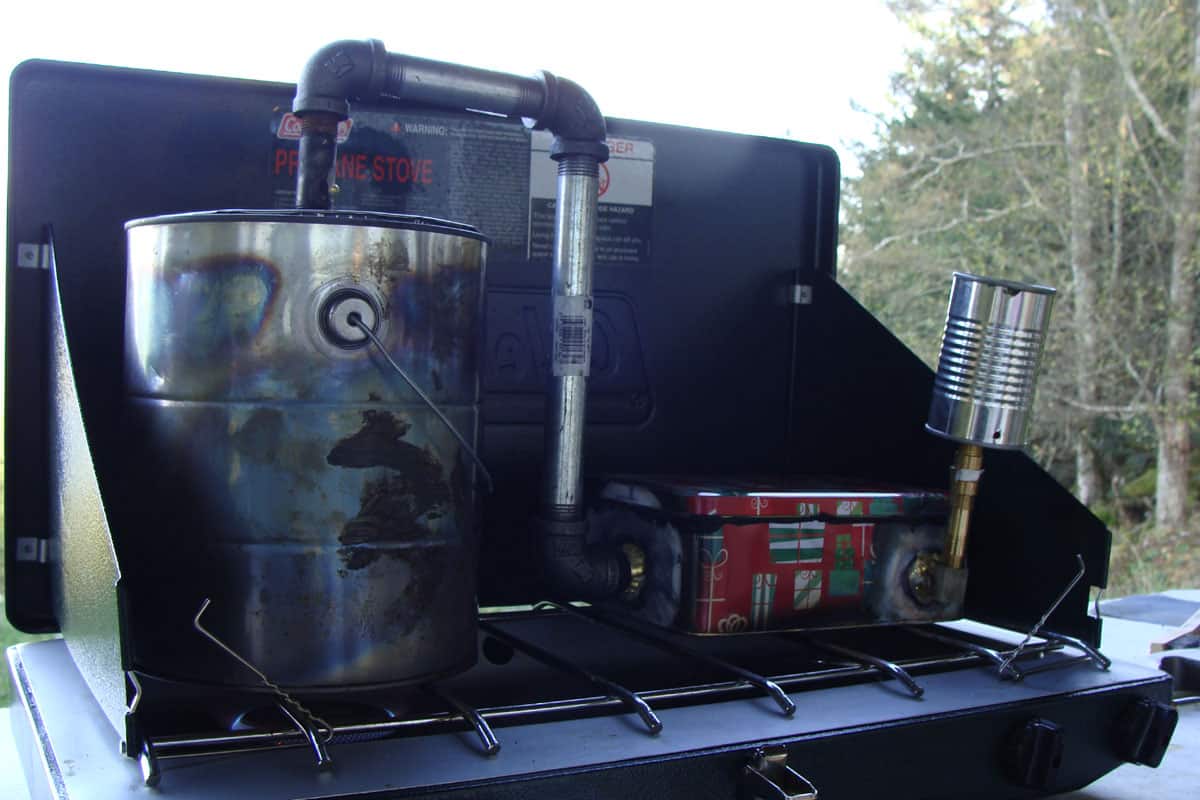 FEMA Gasifier Plans
FEMA Gasifier Plans
FEMA Gasifier Plans. How to build a gas wood generator is one in a series of emergency technology assessments sponsored by FEMA. (the United States Federal Emergency Management Agency).
The report aims to develop detailed, illustrated instructions for a biomass gasifier unit’s fabrication, installation, and operation. A “producer gas” or “wood gas” generator provides fuel for tractors, cars and trucks. They were designed when traditional petroleum sources were severely disrupted.
The instructions and manual to build a gas wood generator apply to mechanically minded people reasonably proficient in metal fabrication or engine repair.
Note of Caution
The FEMA document provides a basic design. However, the consensus of many after building and running is that tar residue in the gas is a genuine issue. Further, the tar is cumulative and can wreak havoc with engines. With this in mind, the FEMA gasifier plans arose in response to emergency use in disasters. Zeb, a resident of Blairsville, Georgia, constructed his gasification unit based on the Federal Emergency Management Agency gasifier design.
There are many variables for this simple design, such as fuel type, size, density, humidity and moisture content. Since publishing the FEMA gasifier plans, gasifier designs are much improved. You would do well to research the Gasifier Download section before you begin your build. You will invest a reasonable amount of time, effort, and money, so research.
Fema Gasifier Plans Tar Reduction
Adi Surjosatyo (2010) suggests gasifier modifications for tar reduction under seven categories:
- the addition of air injection
- recirculation of pyrolysis gas
- combination of pyrolysis gas
- recirculation and addition of air injection
- modification of gas outlets
- modification of the position of the combustion zone
- application of catalytic bed
- separation process of pyrolysis and reduction using different chambers
The paper called Simple guidelines for constructing a low tar wood gasifier for fuel is available in the Gasifier Plans download section. To understand the difference between torrefaction and gasification, follow the link.
Right Click and Download FEMA Gasifier Plans
Also, See Our Alternatives to Gasification For More Free Downloads and note the page on Carbon Monoxide Safety!
Context of the FEMA Gasifier Plans
War Years
Early gasifiers powered vehicles, boats, trains, and small electric generators during World War I, using charcoal and biomass as fuel sources. This period also saw the rise of amateur gasifier enthusiasts due to the relatively low cost and simplicity of petroleum-powered alternatives. However, this changed in 1939 with the German blockade of oil transportation to Europe. With limited gas supplies, gasifiers experienced a surge in popularity used for civilian populations. Approximately one million gasifiers were used during the war, leading to the wood-producer gas units’ development. Gasification continues to offer great promise as an alternative fuel source. However, its complexity and difficulties still need to be solved.
Stagnation
The gasification of biomass faced a significant setback in 1946 when gas became available at an affordable price of 15 cents per gallon. This development had a severe impact on gasifier technology, making it difficult for the advanced gasification systems of the 1980s to match the achievements of gasifiers from the 1940s. The company disbanded its established and specialised gasification design, research and manufacturing teams during this period. As a result of these disbandments, much of the gasification knowledge initially published is now lost or forgotten. This makes it difficult for gasifier operators to access gasification operation and design information.
Despite these obstacles, gasification technology has seen advances in recent years. Advances include improved gasifier designs, higher efficiency gasifiers, automation technologies to improve gasifier operation, gas cleaning and conditioning technologies, and gas utilisation systems for heat, power, chemicals and transportation fuels. Researchers are exploring new biomass gasification processes to make them more efficient and economical. With further progress in gasification technology, biomass gasification could be a viable energy source in the near future.

